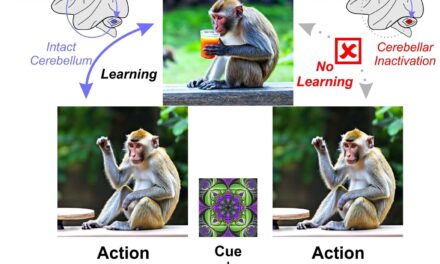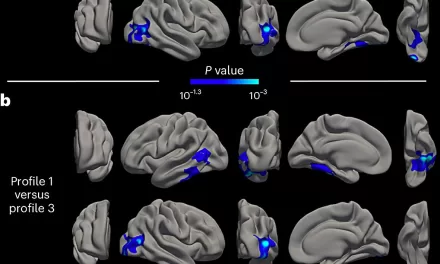A groundbreaking study in mice has revealed new insights into how disruptions in the body’s internal clocks—specifically the misalignment between the brain’s central circadian clock and the liver’s molecular clock—can contribute to unhealthy eating behaviors and weight gain. This discovery opens up exciting possibilities for future treatments targeting obesity and metabolic disorders linked to circadian rhythm disturbances.
Circadian Rhythms and Their Role in Health
Circadian rhythms, the body’s natural 24-hour cycles, are essential for regulating everything from sleep patterns to metabolism. These rhythms are controlled by the brain’s suprachiasmatic nucleus (SCN), a small area of the hypothalamus, which coordinates the body’s internal clocks to maintain balance. While the SCN dictates the timing of overall body processes, every cell in the body—including those in the liver—has its own internal clock. This means that the liver’s clock is attuned to food intake, while the brain’s master clock is synchronized to light exposure.
This synchronization is critical for maintaining healthy metabolism. When the body’s clocks fall out of sync, such as during shift work or after jetlag, it can lead to a range of serious health issues, including obesity, type 2 diabetes, and cardiovascular disease. Despite the well-known health consequences of circadian misalignment, scientists have only recently begun to understand the underlying mechanisms that contribute to these disruptions.
The Role of the Liver and Brain in Weight Regulation
In the new study, researchers led by Lauren Woodie at the University of Pennsylvania explored how disruptions to the liver’s circadian rhythms affect feeding behavior. To do this, they deleted key clock genes—REV-ERB⍺ and REV-ERBβ—in the liver of laboratory mice. These mice exhibited disrupted eating patterns, consuming more calories during their resting phase, which led to unhealthy weight gain. This finding suggests that the liver’s clock plays a crucial role in regulating when and how much we eat.
However, the most surprising discovery was that when the researchers severed the hepatic vagal afferent nerve (HVAN)—the neural pathway that communicates between the liver and the brain—the overeating behavior was reversed. This suggests that the liver’s disrupted circadian rhythm sends signals to the brain that trigger disordered eating. Specifically, the communication between the liver and the arcuate nucleus of the brain, a key center for regulating hunger and satiety, is implicated in these behaviors.
Implications for Obesity Treatment
The researchers believe that understanding this liver-brain communication pathway could be key to developing new therapies for obesity and other metabolic disorders linked to circadian rhythm disruptions. “The implications of these findings are profound,” said Noelia Martinez-Sanchez and David Ray in a related perspective piece. “Identifying this pathway opens up the possibility of reversing the growing obesity epidemic and related diseases by targeting the disrupted circadian signaling between the liver and the brain.”
The study sheds light on the importance of maintaining circadian alignment for overall health, particularly for managing body weight. By addressing the neural pathways involved in circadian disruptions, scientists may be able to develop targeted treatments that help individuals restore balance between their internal clocks—potentially offering a new avenue for tackling the global obesity crisis.
Conclusion
The research highlights how vital circadian rhythms are for regulating healthy eating habits and metabolism. With further exploration of the liver’s role in this process, scientists are closer than ever to uncovering innovative treatments for obesity and metabolic disorders linked to circadian misalignment. By fixing the body’s internal clocks, it may soon be possible to address some of the most prevalent health challenges of modern life.
The study, “Hepatic vagal afferents convey clock-dependent signals to regulate circadian food intake,” was published on November 7, 2024, in Science.












